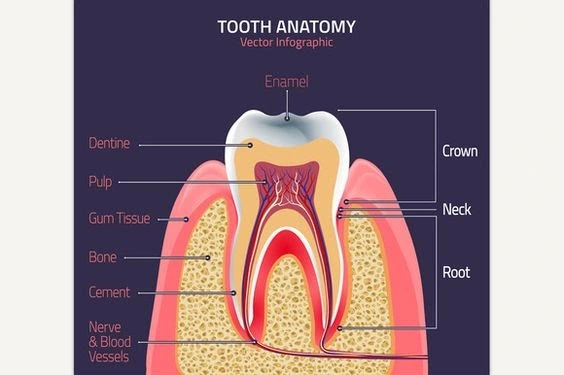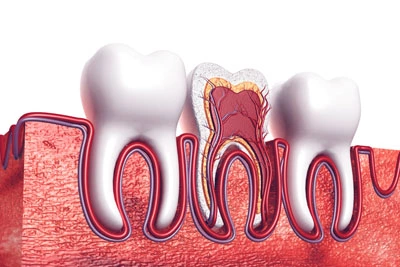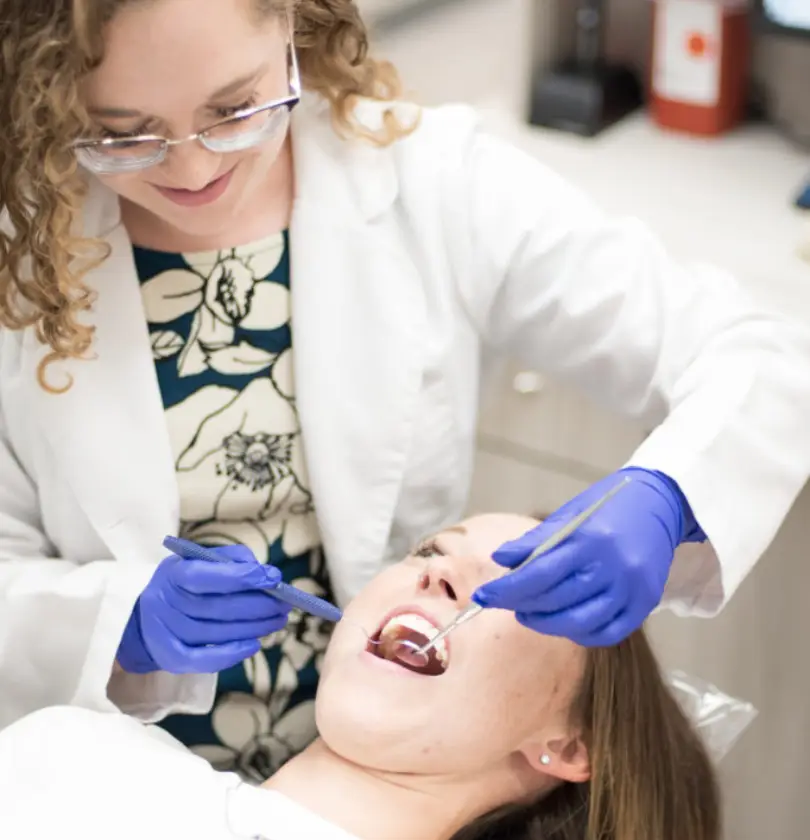We are in pace with all sophisticated technologies and the best doctors with an outstanding track record.

To understand root canal treatment, it is essential to know briefly about tooth anatomy. The tooth consists of enamel, dentin, and pulp tissue. Enamel and dentin are hard tissue of the tooth. Pulp is the soft tissue that consists of blood vessels, nerves, and connective tissue and is encased by dentin and enamel. Pulp tissue is responsible for the formation of enamel and dentin during tooth development. Pulp tissue maintains the vitality of teeth and helps repair and protect teeth from insults. If caries or fracture involves enamel and dentin, simple fillings can be considered. If decay or fractures extend to a pulp, then root canal treatment is advisable.

Root Canal Treatment (RCT) is one type of endodontic therapy. Endodontic is the Greek word – Endo” means “inside,” and “odont” means “tooth.” Root canal treatment is the process of treating the inner infected or inflamed pulp tissue of the tooth. This is carried out by removing the infected pulp from the tooth and filling the root canal space with an inert gutta-percha material. This is followed by the placement of a custom-made dental crown as part of the post root canal treatment restoration.
Although each patient shows different signs, these are a few general symptoms commonly seen.
Sometimes the pain may subside, but underlying pulpal degeneration continues and causes pulp necrosis. Bacteria and infection from necrosed root canal may spread to surrounding gums, bones, and facial spaces leading to abscess formation and facial infection like Ludwig angina. Facial infection is life-threatening. Infection from gums may lead to cardiac vascular diseases.

An average Root canal treatment procedure may take around 30- 60 minutes long whereas complicated cases can take up to 90 minutes. The process may require 2-3 appointments to complete the post root canal treatment.
No, there is no alternative to root canal treatment. No other treatment can help in stopping the infection from spreading to other parts by causing pain and swelling in the gums and jaws.
Yes, but it is recommended to avoid chewing hard food with root canal-treated teeth. It is also recommended to avoid taking food and beverages until the numbness of oral tissue wears off.
Yes, teeth brushing and other oral prophylaxis at home can be done regularly.
Though any general dentist can do root can treatment, the endodontist will have a high success rate.
TESTIMONIALS
We always thought about our customers first. Their needs, comfort and convenience were always the number one priority. Listen to them speaking their heart.

Babita Kalluri
I trust Dr. Ravi's dental care completely. They provide the best treatment that suits us at the required time. Kudos to the whole team!

Chaarvi Kodhati
If you are looking for a gentle and painless experience, this is the right place for you.